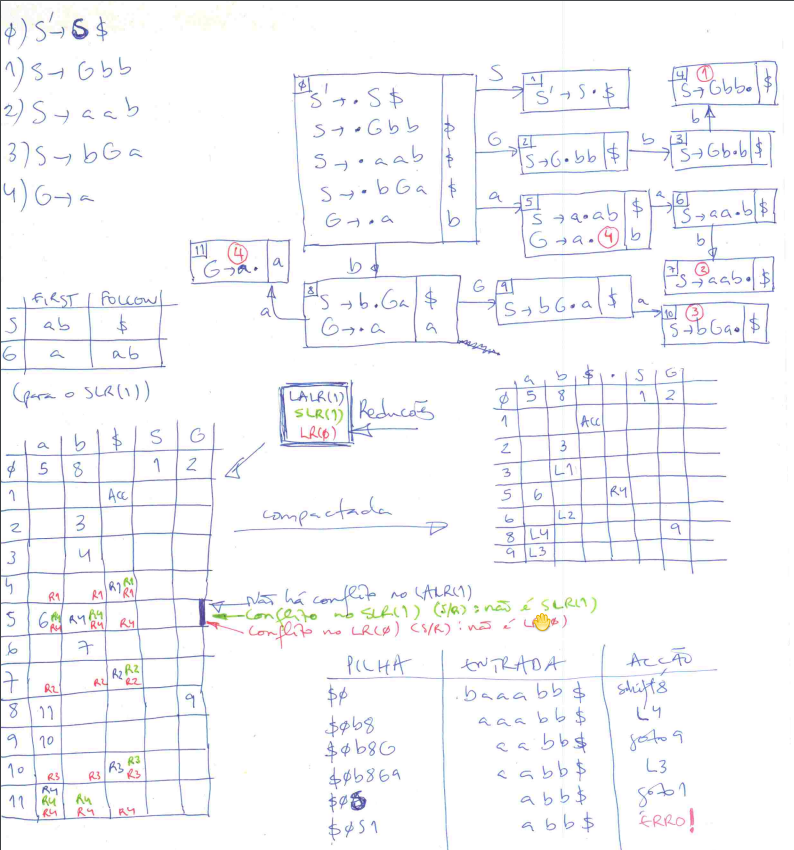Bottom-Up Parsing/Exercise 8: LALR(1): Difference between revisions
From Wiki**3
No edit summary |
|||
| Line 1: | Line 1: | ||
== Problema == | == Problema == | ||
Consider the following grammar, where S is the initial symbol and { a, b } is the set of terminal symbols: | Consider the following grammar, where S is the initial symbol and { a, b } is the set of terminal symbols: | ||
<text> | <source lang="text"> | ||
S -> G b b | a a b | b G a | S -> G b b | a a b | b G a | ||
G -> a | G -> a | ||
</ | </source> | ||
# Compute the set of LALR(1) states for the grammar. Build the corresponding LALR(1) parse table. | # Compute the set of LALR(1) states for the grammar. Build the corresponding LALR(1) parse table. | ||
# Show the parsing process for input '''baaabb''' (including the actions/gotos and the input and stack states). In case of conflict, assume YACC's behavior. | # Show the parsing process for input '''baaabb''' (including the actions/gotos and the input and stack states). In case of conflict, assume YACC's behavior. | ||
Revision as of 11:25, 12 February 2019
Problema
Consider the following grammar, where S is the initial symbol and { a, b } is the set of terminal symbols:
S -> G b b | a a b | b G a
G -> a
- Compute the set of LALR(1) states for the grammar. Build the corresponding LALR(1) parse table.
- Show the parsing process for input baaabb (including the actions/gotos and the input and stack states). In case of conflict, assume YACC's behavior.
- Is this an SLR(1) grammar? Why?
Solução
| Solução completa |
|---|
